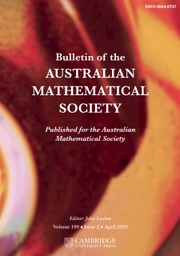Reservoir computing (RC) is a machine learning framework designed to use a dynamical system as the central processing unit to facilitate efficient computation. Since its inception at the turn of the century, the framework has shown impressive results on a range of supervised learning tasks from time series forecasting to classification. Despite a well-developed understanding of how these methods work and a history of successful results, little work has looked to extend the methods encapsulated in RC to unsupervised contexts. The objective of this thesis is to bridge the gap from RC to unsupervised learning tasks, requiring us to address two distinct problems: what does unsupervised RC entail and how can these ideas be used in practice.
We address the first point through the introduction of reservoir time series analysis (RTSA), a novel analysis field that encapsulates methods that leverage the state space representation generated by an RC model for generalised time series analysis tasks. We discuss what RTSA is and position it both in terms of the current understanding of the RC community, but also with respect to other nonlinear time series analysis (NTSA) methods that demonstrate the type of analysis RTSA can facilitate. From there, we introduce a number of methods within RTSA that produce features for inferring information from time series, demonstrating them on a number of well-known dynamical systems.
We address the second point by applying these novel RTSA methods to unsupervised learning tasks, specifically signal distinction, recurrence preservation and concept drift detection. We consider both synthetic and experimental data to demonstrate potential use cases of RTSA on real-world problems, as well as a range of NTSA methods as comparisons to benchmark RTSA performance. We are able to demonstrate strong performance by the RTSA methods across these tasks, both generally and with respect to existing NTSA methods, which encourages further development of the RTSA field in the future.
Some of this research has been published in [Reference Thorne, Corrêa, Zaitouny, Small and Jüngling1–Reference Thorne, Jüngling, Small, Corrêa and Zaitouny3].


